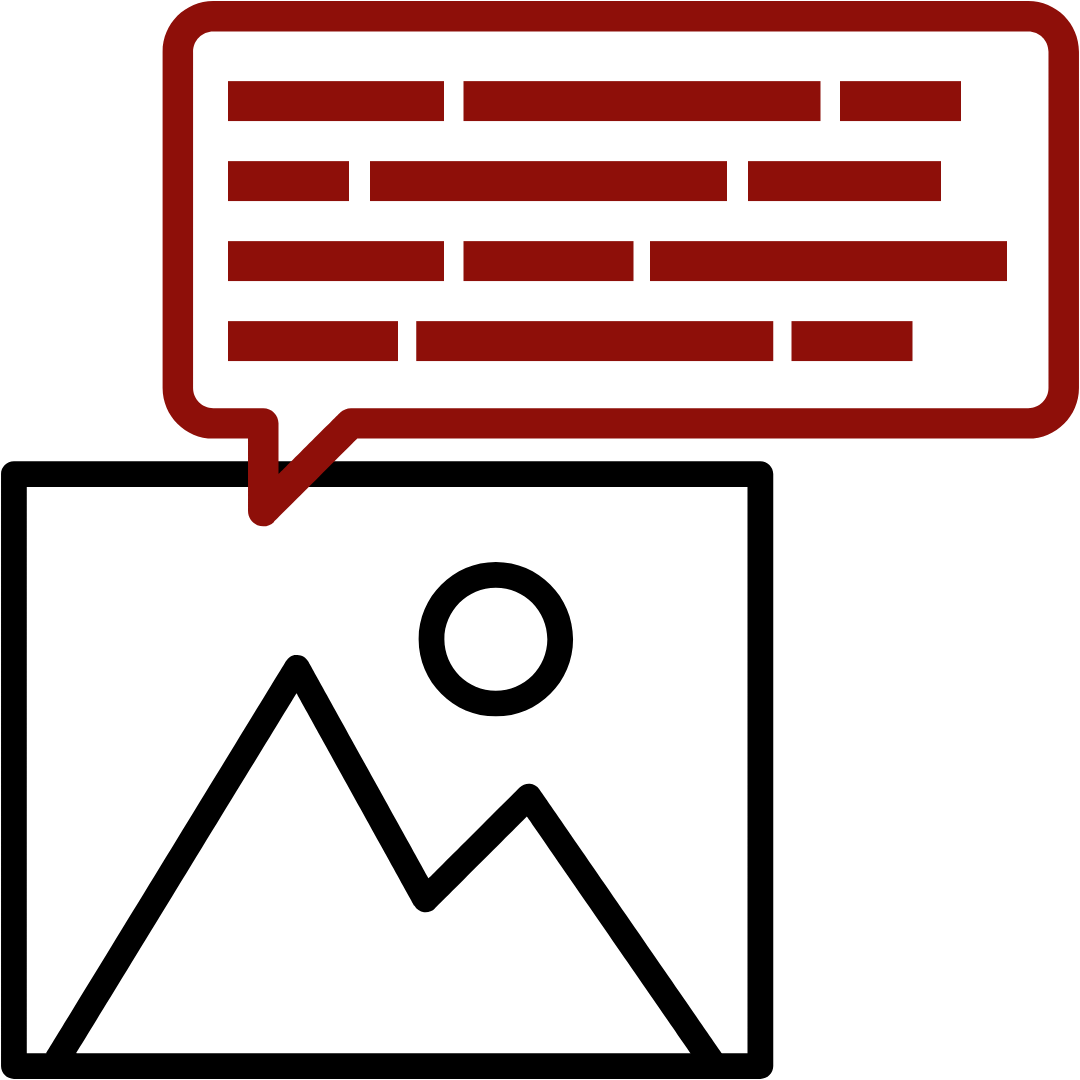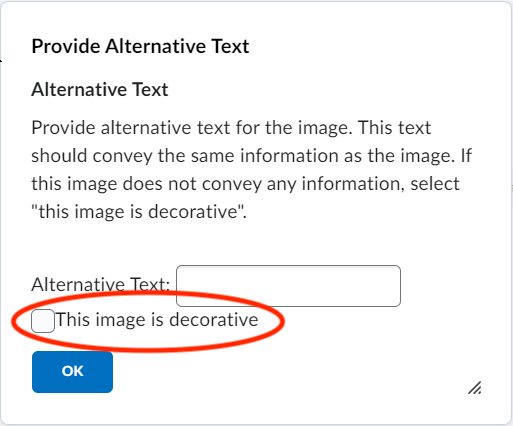Accessibility FAST

Alternative Text
Quick Start Guide
Visual elements that include information must have a text-based description. Graphics, such as backgrounds, borders, or visual flourishes that do not contribute information are decorative.
Mark decorative images
Images included for purely aesthetic purposes (or that have an adjacent text equivalent or descriptive figure caption) should be marked as decorative.

Describe informative images
For visuals that contain information there are three methods to provide alternative text:
Depending on the complexity of the graphic, knowing which type of text alternative to provide is important. Alt text depends on context and purpose. If equivalent information is present in adjacent text or a figure caption, graphics should be marked as decorative.
Marking images as decorative, adding a figure caption, or including alt text will differ depending on platform or software. Refer to later chapters in this guide for instructions to add text equivalents to visuals in specific platforms.

Alt text = type + focus + details
To write alt text: Include the type of visual, describe the focus, and add essential details. Consider how you would describe the image if talking to a friend on the phone. Use proper punctuation and grammar and limit alt text to 2 or 3 brief sentences.
Alt Text Example
 [type] Diagram of [focus] satellite image resolutions comparing real object shape to satellite images taken at 30 metre, 10 metre, and 1 metre resolutions. [details] The diagram illustrates that the shape of an object will be more accurately represented as the resolution of a satellite image increases.
[type] Diagram of [focus] satellite image resolutions comparing real object shape to satellite images taken at 30 metre, 10 metre, and 1 metre resolutions. [details] The diagram illustrates that the shape of an object will be more accurately represented as the resolution of a satellite image increases.
Use AI as a starting point
 AI has rapidly improved in describing images, particularly the structure of complex images and extracting text from images. Edit AI generated descriptions for accuracy and clarity. Read more about using AI to generate alt text.
AI has rapidly improved in describing images, particularly the structure of complex images and extracting text from images. Edit AI generated descriptions for accuracy and clarity. Read more about using AI to generate alt text.
Moving forward…
Understand that alternative text is so fundamental to accessibility it is the first Web Content Accessibility Guideline (1.1.1). Writing alt text is somewhat of an art. Including adjacent text equivalents and reinforcing visual information with text is an excellent way to reach everyone. Remember to try your best, ask for help, and try to be as inclusive as possible.
For more information on Alt Text, move to the next page.

